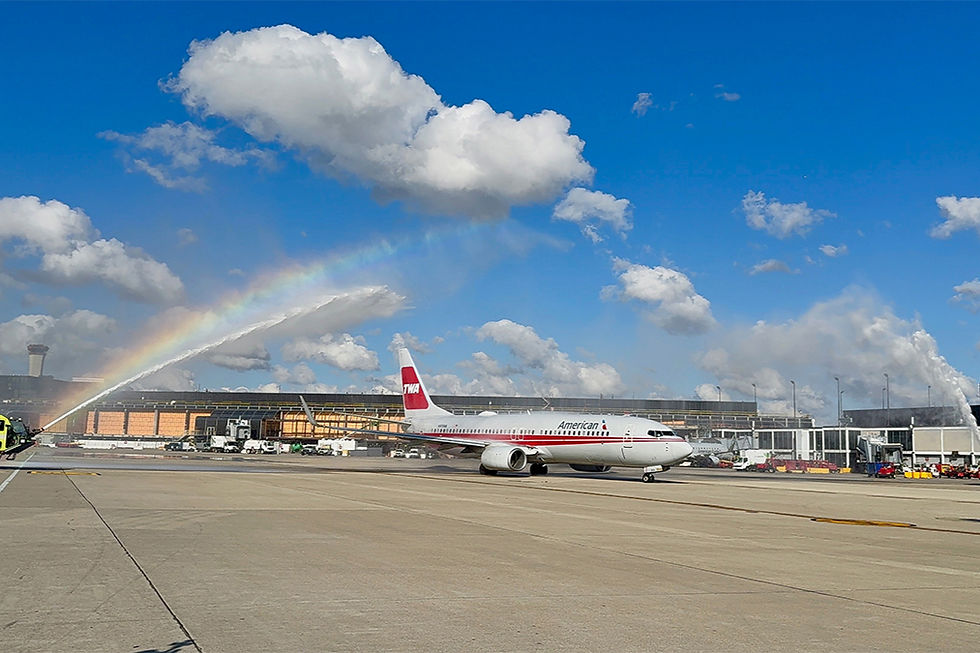NYRBA: The New York, Rio & Buenos Aires Line
- Joe Breitfeller

- May 20, 2020
- 3 min read
Most aviation enthusiasts have heard of Pan Am's gregarious and politically well-connected leader Juan Trippe, but few have heard of Colonel Ralph A. O'Neill. Between 1929-1930 O'Neill successfully launched the world's longest airline, 7,800 miles, linking the U.S. with South America.

Often in history the true innovators are overshadowed by those who have achieved financial success, building on their efforts. As we approach a century of scheduled passenger service, we would like to recognize one such innovator, Colonel Ralph A. O’Neill. Born in 1896, Colonel O’Neill became a U.S. flying ace during WWI earning numerous accolades including the Distinguished Service Cross (3 times) and the French Croix de Guerre with Palm. Between 1920-1925 under contract with the Mexican Government, Colonel O’Neill commanded the entire civil and military aviation services, essentially founding the Mexican Air Force. In 1927 Colonel O’Neill became the exclusive Agent for the Boeing Airplane Company and the Pratt & Whitney Aircraft Company for Latin America.

Having built important relationships with Latin American government officials, in 1929 O’Neill launched the New York, Rio & Buenos Aires Line, abbreviated NYRBA Line. In his 1973 memoir "A Dream of Eagles", Colonel O’Neill states,
“This is the story of a dream come true, only to be exploded – a dream of building the world’s longest airline, through hurricane zones and tropical rain belts, at a time when airplanes speeded at only one hundred miles per hour, and flying was regarded as primarily the province of birds.”
By 1930, O’Neill had established air bases in twenty-nine cities in sixteen countries and colonies, with routes extending 7,800 miles. Compared to the fledgling Pan-Am, NYRBA was a modern airline operating the very best equipment, including their flagship Consolidated Commodore flying boats. However, The Aircraft Corporation of America (Pan-Am’s parent company) consisted of a triumvirate of people with powerful connections. ACA’s chairman, Dick Hoyt, also served as the chair of Wright Aviation and Pan-Am was managed by Juan Trippe and his multi-millionaire Yale classmate Sonny Whitney. A combination of the Great Depression and Juan Trippe’s relationship with U.S. Postmaster General Walter Brown and the Assistant PMG Washington Glover, forced the sale of NYRBA to Pan-Am in September 1930. Although by law new airmail contracts had to be advertised for competitive bidding, Postmaster General Brown refused to put the routes along the east coast of South America up for bid unless NYRBA agreed to merge with Pan-Am. Although NYRBA had foreign mail contracts throughout South America and passenger traffic was growing steadily, they were posting losses of about $50,000/month at the time of the August 1930 merger. One of NYRBA’s main supporters and investors, James Rand of the Remington Rand Corporation had also reportedly suffered substantial losses in the stock market crash the previous year.

Juan Trippe may have held all the cards, but Colonel O’Neill built the airline that eventually made money for Pan-Am’s rapid expansion. In the months before the merger, the National Geographic Society had endeavored to make an expedition of over 10,000 miles along NYRBA’s New York to Buenos Aires route system, and by all accounts they were duly impressed with the airline O’Neill had built. Although Trippe tried to pressure the editorial staff of the magazine to say the expedition was sponsored by Pan American Airways, they refused. When the story was published in the January 1931 National Geographic issue, the credit went to Colonel O’Neill and NYRBA. The article stated,
“You sense the permanence and stability of air travel when in city after city you see new ramps, floats and hangars, with shops, extra planes, spare parts, radio stations, and all of the paraphernalia of aviation.”
As the history of the commercial airline industry is written, we believe that Colonel Ralph A. O’Neill should be remembered as the innovator who introduced U.S. international airline passenger service. Juan Trippe and Pan-Am built on Colonel O’Neill’s model and successfully introduced their world-famous flying clippers in the following years, but without the underhanded political dealing, 20th century aviation may have been dominated by NYRBA, rather than Pan Am.


